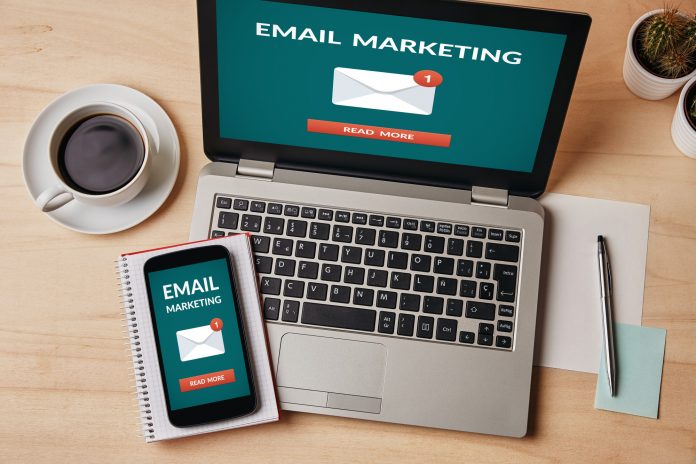In 2019, almost 294 billion emails were sent every day. To maximize email open rates, you need to deliver your content at the optimal time. Email timing is an art that depends on several factors.
Read this guide to learn how to get the perfect timing for your email delivery. You will soon benefit from increased open rates and more subscribers.
The best days and times for email marketing
In order to get the desired click-through rates for email interaction, several things are required. Sure, your emails need strong subject lines and descriptions. But even the best subject line will not be clicked if the timing is wrong.
Depending on your email marketing goals and audience, your timing will change. Before planning your next email, think about the who and why of your content.
Who are you writing for
Successful email marketing is based on a clearly defined target group. Click rates and perfect timing vary depending on the purpose of each email campaign.
When writing a copy of email, keep it human and personal. Use the feeling. Do not proceed directly for transactional calls-to-action.
Instead, prepare for your calls to action with real thoughts or comments. There are a few types of email content that affect perfect email timing:
- Getting to know each other: a personal, short, non-binding introduction and emotional, sympathetic language
- The request: builds on an existing relationship, a clear CTA and gives the recipient the opportunity to say no
- The follow-up: short and humorous with a nod to get out, without any conditions; lower pressure promotes the reaction
- Thanks: showing appreciation and positive impact and paving the way for future cooperation
Each of these types of email provides information on the best time to deliver. Your content goals are based on different response rates on different days and at different times of the week. For more information on the best days and times for email delivery based on your audience and goals, please see below.
Monday
The first day of every week is the best (and worst) day to send email. When people get back to work, people’s inboxes overflow. Keeping content simple for your scheduled Monday emails is the best way to open them.
Don’t send your promotional emails on the first day of the week. These will most likely remain unopened and unclicked. Focus on business content and avoid long newsletters.
Your ideal Monday email content goals could be a follow-up, question, or thank you. These give the recipients time to read through quickly. They also give you time to send automated email reminders during the week.
Midweek (Tuesday to Thursday)
In general, marketers agree that Tuesday is the best day of the week to send an email. The email time for Tuesday and other days of the week falls around 11 a.m. This time follows the general workflows of employees in all industries.
Most likely, people got used to a routine that got used to the work week. Email marketing follows employee routines to get the best opens, clicks, and responses. Midweek aiming gives people the time to read lengthy emails.
Getting to know each other and question types from emails are best for midweek. The more time you spend processing your content, the click-through rates of the subscribers increase. Use this to your advantage with focused campaign goals.
Friday
After midweek, Friday is the best day to send email. Your click-through rates are highest when you schedule delivery around 11:00 a.m. When scheduling afternoon emails, consider campaign goals with more subtle calls-to-action.
When employees leave the office, email should make it easier for them to interact. Verbose content like newsletters are less successful, while promotions offer easier engagement.
weekend
Depending on your workplace culture and policy, employees may or may not check email over the weekend. If so, the best day for email timing is Sunday evening. In general, fewer emails are sent on the weekend, so they may become more important.
At the weekend, emails with large content or slower calls to action can attract more openings and clicks. Follow-ups and thank you are ideal content goals for this deployment window.
Perfect timing depends on you and the right tools
Your perfect email timing depends on your content needs. Alongside the campaign goals and your audience, consistency is key. To get the most out of perfect timing, your emails shouldn’t be unexpected by subscribers.
If you know the best time to schedule email is Tuesday or Friday 11:00 AM, schedule your email for those times. In order to differentiate your delivery time, you can vary the publication by minutes or minutes of rest. Quiet minutes can help make your email stand out from the competing inbox.
With the right tools, you can send automated emails to take the strain off your marketing team. You can even schedule delivery by time zone for optimal opens and clicks for widespread campaigns. Automatic resending is also the perfect way to keep track of unopened emails.
Testing your optimal delivery window can also narrow down the perfect timing for your emails. A / B testing tools and premium testing kits can help you figure out what current subscribers prefer. This knowledge increases the response and effectiveness of the campaign.
Master email timing with Vertical Response’s automated emails
Now that you better understand the art of email timing, you need a reliable platform. You know the advantages of automation and perfectly timed delivery. Finding a tool that is easy to automate, deploy, test, and template is difficult to find.
Vertical Response has everything you need to timing your email delivery. We also offer automated responses to improve customer follow-up time. Build and test your emails and grow every campaign; Sign up for a free trial today and explore your email today.
© 2021-2020, Chris Duncan. All rights reserved.







